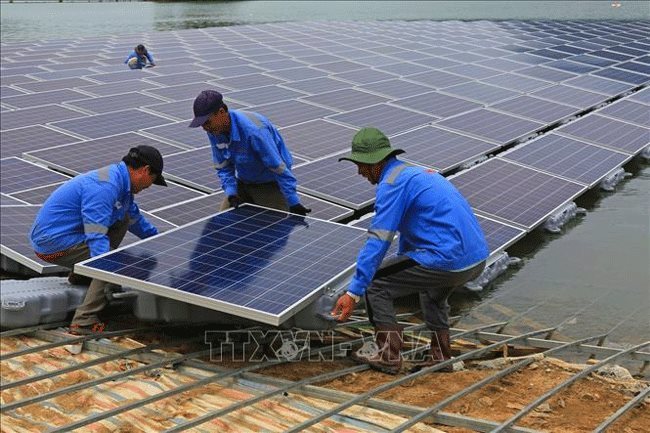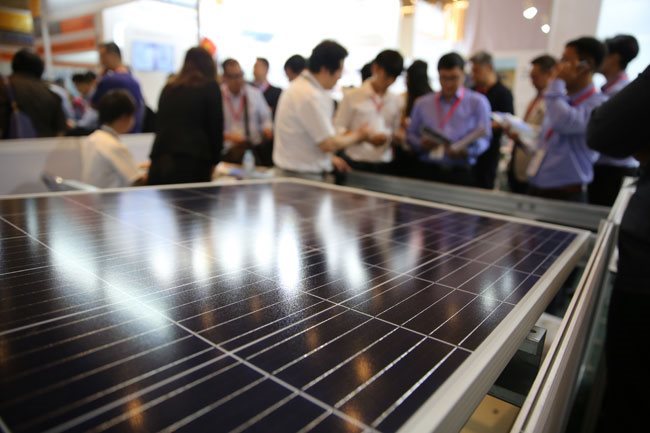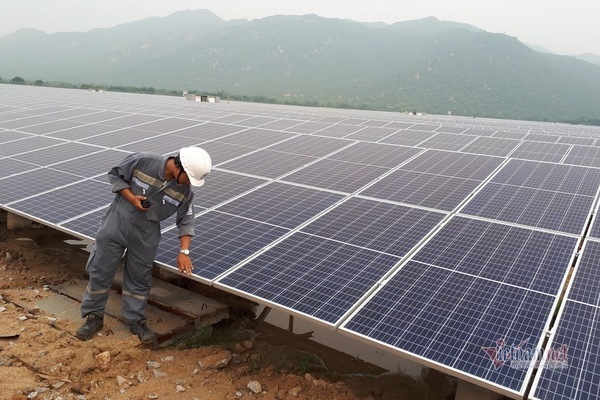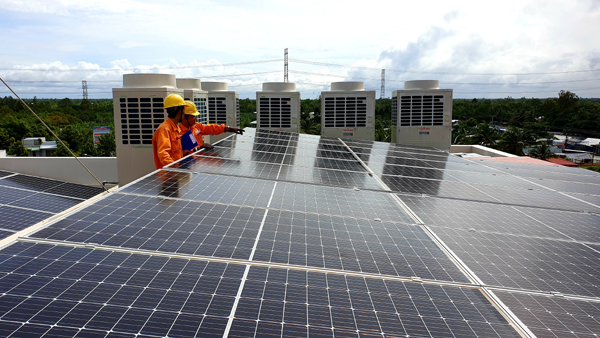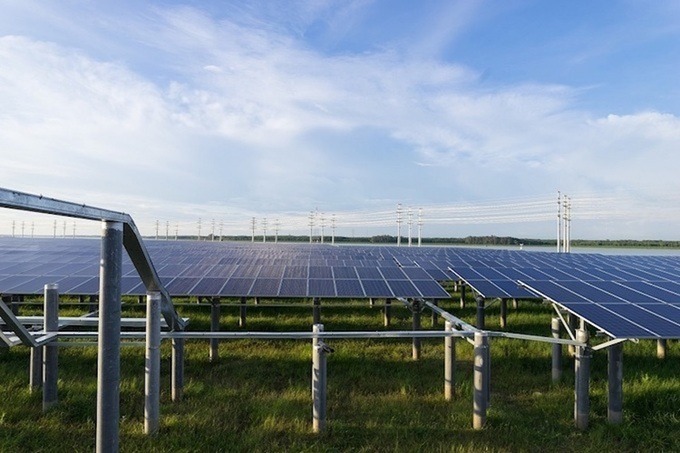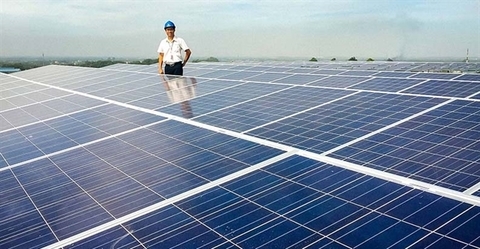- © Copyright of Vietnamnet Global.
- Tel: 024 3772 7988 Fax: (024) 37722734
- Email: evnn@vietnamnet.vn
solar power
Update news solar power
Government to have new policy on purchase of solar power soon
At present, the cost of solar power panels has cooled down, so shortly, the MoIT would suggest the purchasing price of solar power without using feed-in tariffs (FITs).
Rooftop solar power saw tremendous growth in 2020
Over 100,000 rooftop solar power works with total capacity of 9,300 MW were connected to the national grid by December 31, 2020.
EVN to stop buying output from new rooftop solar power projects
The Vietnam Electricity Group (EVN) on December 26 announced that it would stop purchasing electricity from rooftop solar power projects developed after December 31 until the prime minister issues a new decision.
The many risks energy service companies may encounter
Energy service companies (ESCOs) are facing numerous risks since the regulatory framework for their sector is both incomplete and patchy, according to industry insiders.
Waste solar panels can be recycled: scientists
A researcher on renewable energy, Dr Vo Viet Cuong, from the Electrical and Electronic Engineering Faculty under the HCM City University of Technology and Education, has noted that there is no absolutely clean energy.
How will solar panels be used when their life cycle ends?
Most of the components used to make solar panels are recyclable. Expired solar panels will not be a danger if there are reasonable regulations and good technologies.
Will wind, solar power replace traditional power?
Both ‘dirty energy’ (coal-fired thermopower and hydropower) and ‘clean energy’ (wind and solar power) have advantages and disadvantages.
Rooftop solar power popular in southern provinces
According to the Electricity of Vietnam (EVN), the total capacity of rooftop solar power projects in southern provinces now makes up 60 percent of its total solar power capacity nationwide.
Solar power: projects line up, policy under consideration
Tens of solar power projects are awaiting to be added to the list of power generation projects to be developed. Meanwhile, ministries are still discussing the new pricing mechanism after the preferential FIT expires.
APV could be feasible in Vietnam with the right laws
APV, or Agriculture Photovoltaic system, is becoming increasingly popular around the world. It could be a feasible model in Vietnam if the government sets a reasonable legal framework to develop it.
Without coal-fired thermal power, can Vietnam afford expensive 'clean power'?
The Ministry of Industry and Trade has not yet confirmed the complete withdrawal from use of coal-fired thermal power, but is designing a roadmap to reduce the proportion of this kind of power for the nation’s electricity output.
Energy security: Vietnam says ‘no’ to coal-fired thermopower
Under a scenario described in the eighth national power development master plan (Plan 8), which is now being compiled, Vietnam would not build more coal-fired thermopower plants from 2026 to 2030.
Low price scheme disappoints rooftop solar-power developers
As of August 23, 45,299 rooftop solar power projects had become operational with total capacity of 1,029 MWp, according to the Electricidty of Vietnam (EVN).
Solar power investors fear they may not be able to enjoy preferential FIT
Covid-19 and the slow implementation of power transmission projects may make it impossible for solar power projects to connect to the national grid by the end of the year.
Vietnam considers bidding on solar power prices
A policy allowing investors to bid on solar power prices is being developed by the Vietnamese Ministry of Industry and Trade (MOIT). It is expected to be submitted to the Prime Minister this August and applied this year.
Solar farm developers fear losses of trillions of VND
 As current policies are unclear, many solar farm project developers cannot sign contracts on selling electricity to the Electricity of Vietnam (EVN).
As current policies are unclear, many solar farm project developers cannot sign contracts on selling electricity to the Electricity of Vietnam (EVN).
Is there a rooftop solar-power boom in Vietnam?
 Existing legal loopholes have been exploited by many investors taking advantage of incentives given to rooftop solar power projects.
Existing legal loopholes have been exploited by many investors taking advantage of incentives given to rooftop solar power projects.
Solar power plants accelerate connection to grid to enjoy incentive
Many solar power plants have managed to get hooked to the power grid early to enjoy the high electricity prices, thus overloading the grid.
Renewable energy market picks up as many projects put on sale
 As wind and solar power project developers now can enjoy a high FIT (feed in tariff) price, investors are registering more projects to resell for profit.
As wind and solar power project developers now can enjoy a high FIT (feed in tariff) price, investors are registering more projects to resell for profit.
Experts warn of scorching-hot growth of solar power in Vietnam
 The total capacity of solar power projects registered by investors has become nearly 10 times higher than the targeted level.
The total capacity of solar power projects registered by investors has become nearly 10 times higher than the targeted level.


